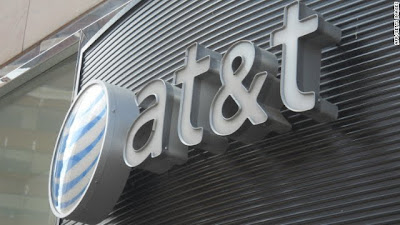
(CNN) -- Welcome to the multiple-mobile-gadget world.
AT&T on Wednesday became the latest wireless carrier to announce it will offer a range of "shared" data plans, which let customers buy a pool of data and share it among several Internet-connected mobile devices, like smartphones and tablets.
Verizon made a similar move in June when it announced its "Share Everything" plans.
Not to be outdone on the marketing front, AT&T calls its new plans "Mobile Share." Customers aren't forced to switch to the new one-big-pool-of-data plans. AT&T says in a news release that the "bucket" data plans prep the company for a multiple-device world.
"Today we think of people's smartphones and tablets sharing a bucket of data," David Christopher, chief marketing officer for AT&T Mobility, said in a written statement.
"But in the future we'll see health care monitors, connected cars, security systems and other devices in the home all connected to the mobile Internet."
The new plans will be available in late August.
The shared plans are designed for households that own several Internet-connected mobile devices and to encourage people to purchase wireless data connections for all of those devices. Currently, many tablet owners, for example, only connect to the Internet with Wi-Fi, which is free, because they don't want to purchase new mobile plans for tablets. The company is trying to encourage those people to pay more per month to get wireless data service, but without having to create a new plan entirely.
The data is shared between the devices in the sense that all gadgets connected to the plan would draw from the same overall pool of data. This may work well if only one of the devices is a "data hog," but multiple data-sucking devices could become costly.
Tablet and e-reader ownership is becoming more common, with 29% of American adults owning at least one of those mobile devices, according to a January survey from the Pew Internet & American Life Project.
More than half of all U.S. cell phone users own a smartphone, which is distinguished because it usually connects to the Internet and requires a data plan.
For AT&T's new plan, customers pay for an overall pot of data -- 1 GB per month is $40; 20 GB is $200 -- and then pay additional fees to add extra devices. Smartphones cost between $30 and $45 per month, depending on the amount of data a person purchases. A person can add a tablet computer or gaming device for $10 per month. The per-gadget and per-GB rates get cheaper, relatively, as you add more devices and more data.
AT&T describes this graduated payment system as "the more you share, the more you save," but, of course, customers will actually pay more in total for additional services.
Let's do a quick comparison of the old and new plans.
Depending on how many devices you have, the plan may or may not be smart.
Say you have a smartphone and a tablet computer and you want 6GB of data per month, between the two gadgets. Under the new "shared data" plan, you would pay $35 for the phone, $10 for the tablet and $90 for the data. That's a monthly total of $135.
Under the old plan, 3GB of data for a tablet would cost $30 per month, with a contract. A phone with unlimited talk and text (that's offered on the "shared" plan) costs $90 per month. And then the remaining 3GB of data on the phone costs $30.
So that's a total of $150, or $15 more than the new "shared" plan.
The shared data plan can include up to 10 devices, however, and the prices per GB and per gadget drop as the plan becomes more involved and includes more devices.
For more information, see this online guide to the new pricing structure (PDF). AT&T also has a "data calculator" to help customers decide how much data they use. There are overage fees for going over the data limit, and AT&T says other fees may apply. (A company representative could not immediately be reached for comment on this matter).
The tech news site CNET says the plans are better for large groups of people.
"While these plans aren't the best deals for individuals, large families or even groups of really, really close friends may want to consider them," writes Roger Cheng. "That's because the more people who sign on, the lower the price per gigabyte and user. Of course, if someone is a heavy data user, that person may want to stick with an individual plan, or risk hogging up the total available data for everyone."
That site also has posted charts that compare the AT&T and Verizon shared-data plans.
"Individuals who don't use a lot of data and are considering the entry-level option would save a bit of money with AT&T, although those savings are negated when a second person jumps on the plan because of the higher smartphone fee," CNET writes.
"At the 10GB mark, however, Verizon gets the edge if an individual was buying into that plan. But the price is the same if a second person signs on to the plan, and is actually a better deal if more members join."
As CNNMoney reports, the cheapest shared plan is more expensive than the least expensive existing data plan. "Today, the cheapest available AT&T smartphone plan is $60 a month, giving users 300 MB of data and 450 voice minutes per month. The cheapest Mobile Share plan, with 1 GB of data, is $85 per month," that site writes.
source: CNN
